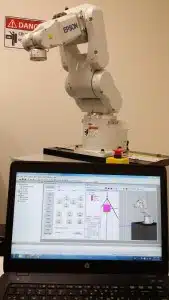We have surprisingly little understanding of how much our sense of touch contributes to our everyday lives, but Sydney biomedical engineer Dr Heba Khamis has discovered a way to interpret the language of touch.
“We can pick a grape without squashing it or hold an egg without crushing it and we can use heavy tools, such as an axe, or carry the weight of our whole body,” describes Heba. “We take for granted that we can skilfully handle many day-to-day objects without dropping or squashing them, but this would not be possible without the information that is provided by thousands of touch receptors in each fingerpad.”
These touch sensors relay information about the shape, texture, pressure and even the slipperiness of an object, but to date researchers have struggled to understand and translate this information.
In a world first, published in the Journal of Neurophysiology in May this year, Heba and her colleagues at the University of New South Wales (UNSW), have decoded these signals and shown that responses could be characterised in real-time to discover how the touch receptors in our fingers communicate this tactile information to the brain.
“Previously, only individual nerve signals have been studied” explains Heba. “For the first time, we are collecting the signals of many sensory nerves “to produce a comprehensive analysis of the information at our finger tips that we use to understand and react to the things we touch”.”
Currently, prosthetics rely on only what we see to provide information about what we touch. By unlocking the feedback that these touch sensors provide about the world around us, Heba hopes to one day give prosthetics the sense of touch.
Heba presented her research at Fresh Science New South Wales 2015.
Fresh Science is a national program that helps early-career researchers find and share their stories of discovery. Over 50 early-career researchers nominated for Fresh Science NSW, which was held at the Australian Museum (training) and Three Wise Monkeys Hotel (public challenge event).
Fresh Science New South Wales was supported by the Australian Museum and the University of New South Wales.
Contact: Heba Khamis, The University of New South Wales, h.khamis@unsw.edu.au






 Fresh Science is on hold for 2022. We will be back in 2023.
Fresh Science is on hold for 2022. We will be back in 2023.